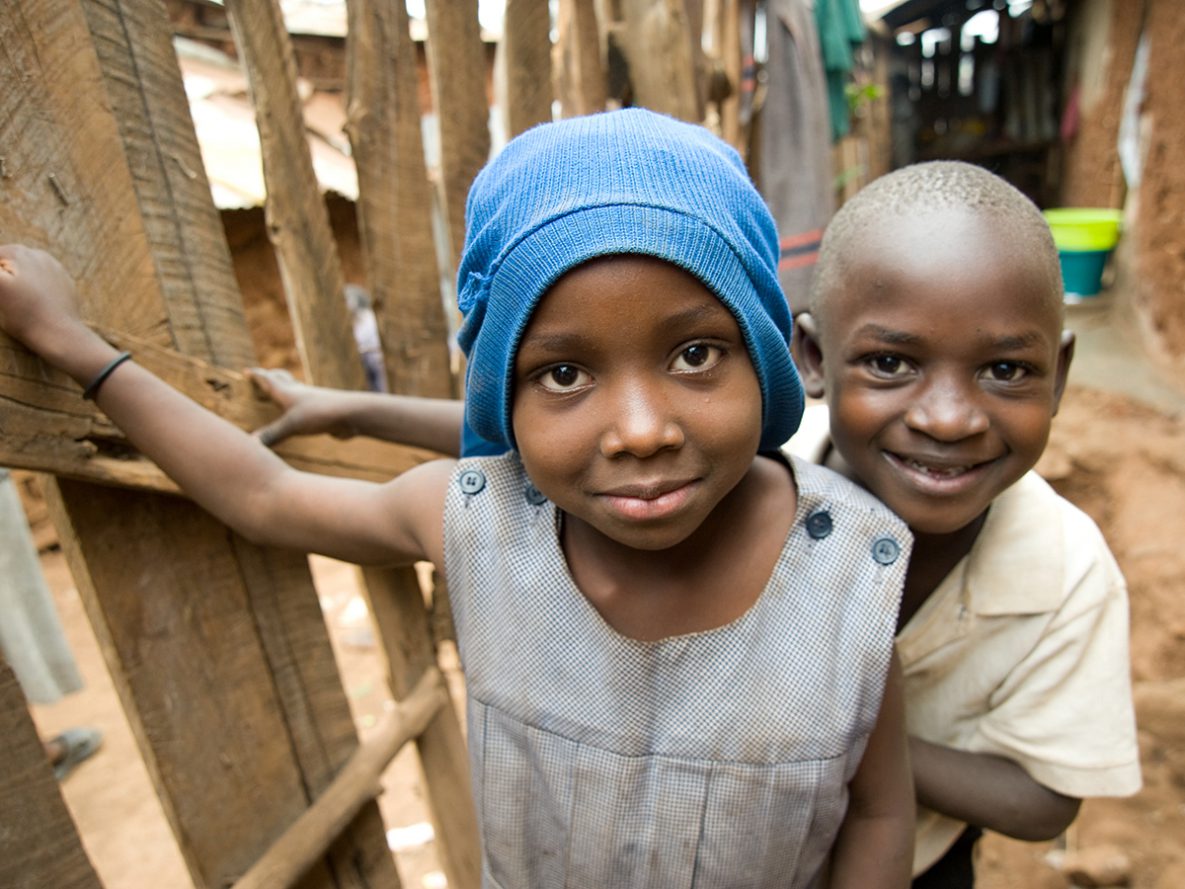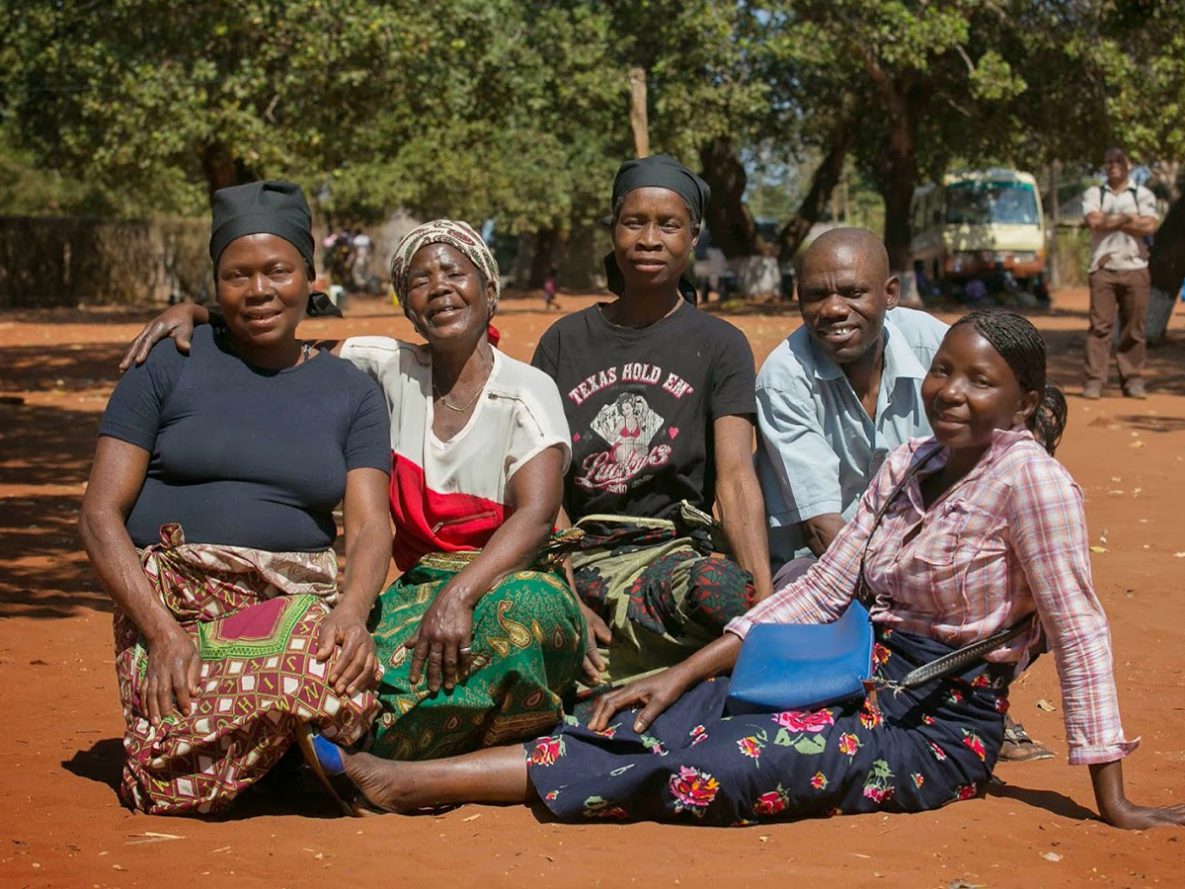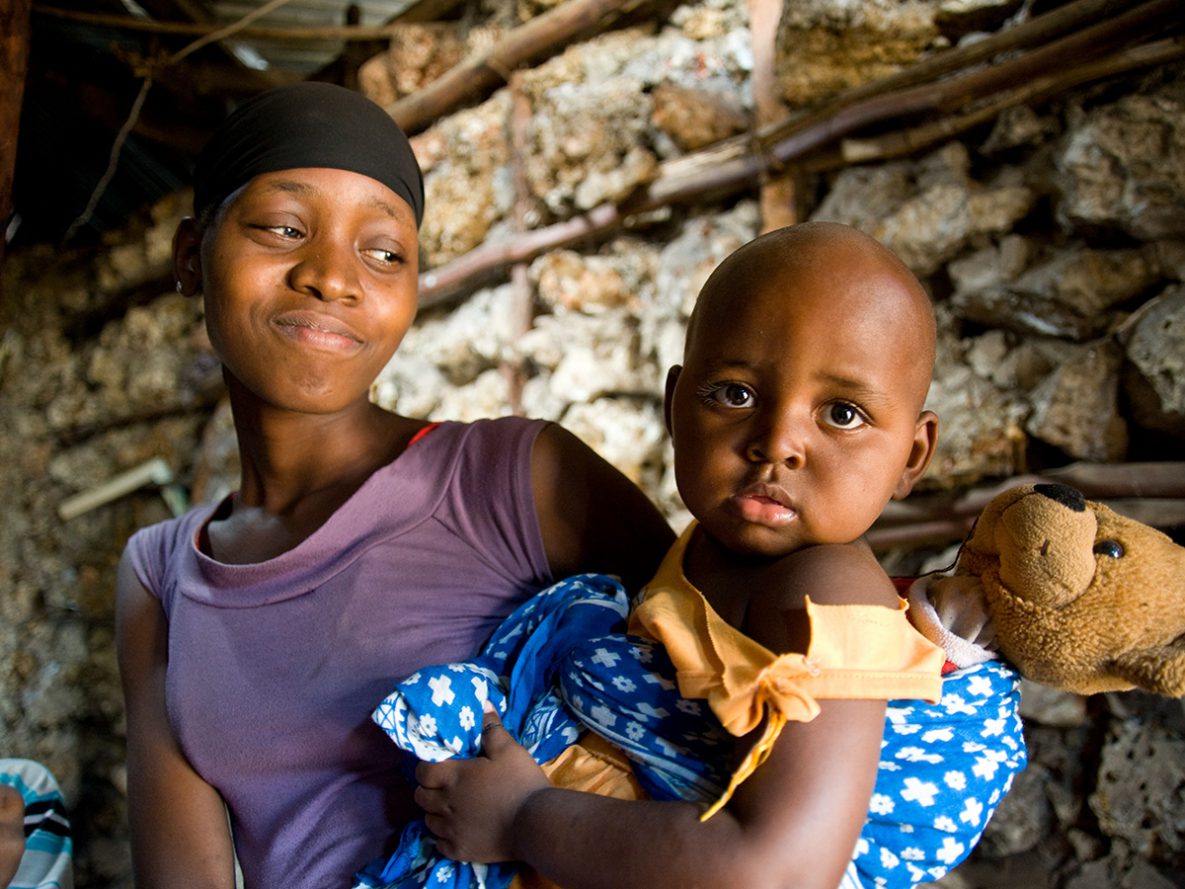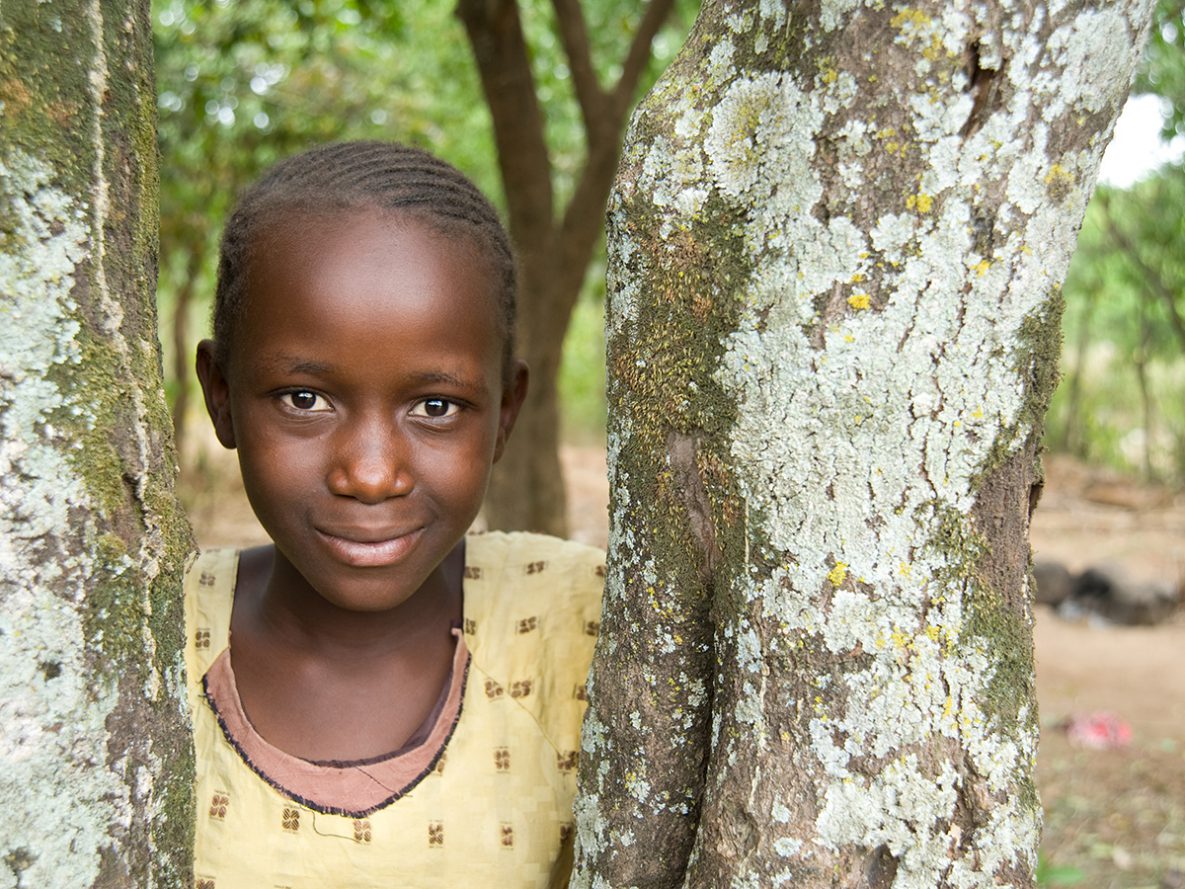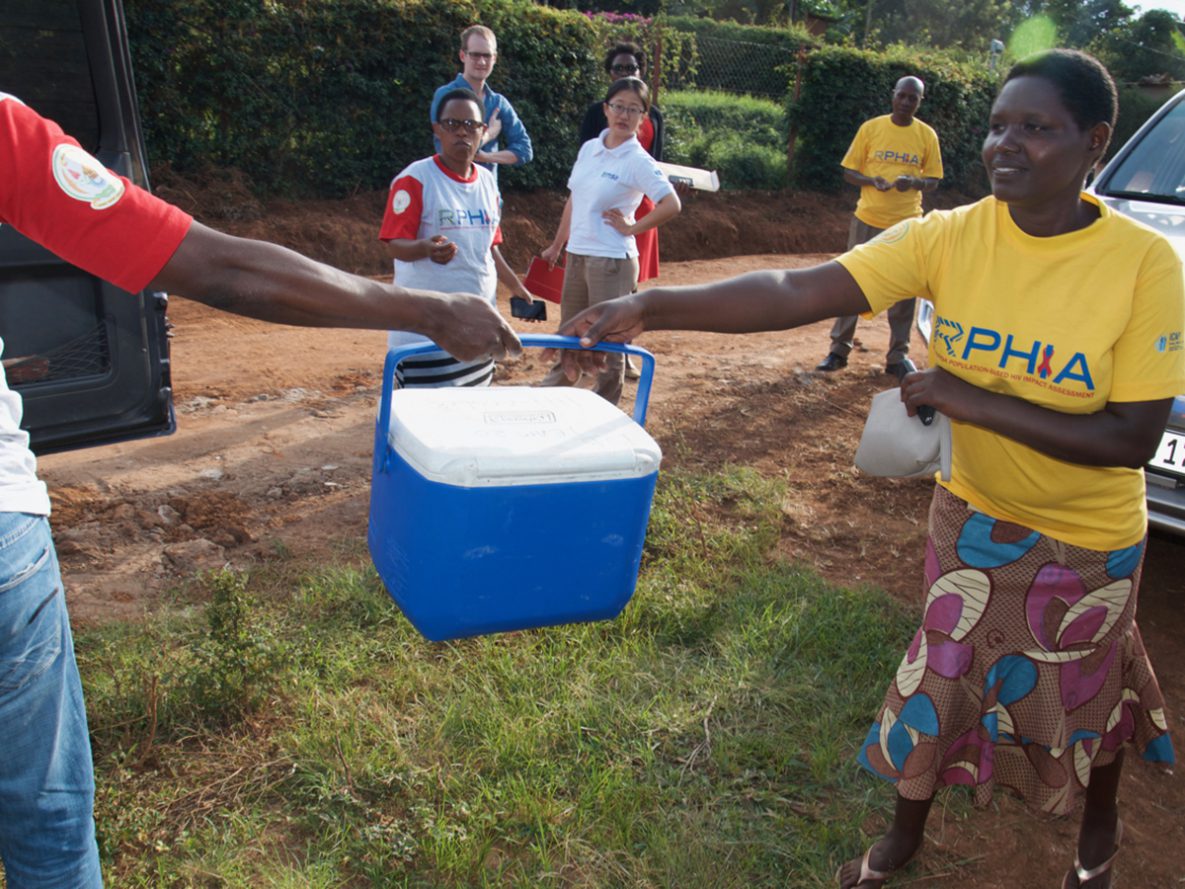HIV
Updated November 30, 2020
HIV is a virus spread through certain body fluids that attacks the body’s immune system, specifically the CD4 cells, often called T cells. These special cells help the immune system fight off infections. Left untreated, HIV can destroy so many of these cells that the body can’t fight off infections and disease. For the first time in modern history, the world has the tools to control the HIV epidemic without a vaccine or cure, while laying the groundwork to eventually end HIV. Controlling the epidemic requires accelerating efforts at finding and linking those groups at greatest risk for HIV infection with treatment and prevention services.
What is the global impact of HIV?
- There were approximately 38 million people worldwide living with HIV in 2019. More than two-thirds are living in sub-Saharan Africa.
- Despite the existence of medications that can control HIV and even reduce viral transmission, HIV is still a leading cause of death and a health threat to millions worldwide. In 2019, approximately 690,000 people died of AIDS-related causes and 1.7 million people were newly infected with HIV.
What is CDC doing?
- For more than three decades, CDC has been a leader in global HIV research and response. As an implementing agency of the U.S. President’s Emergency Plan for AIDS Relief (PEPFAR), CDC works side by side with Ministries of Health, using our scientific and technical expertise to help deliver high impact, sustainable HIV prevention and treatment services to millions of people in countries most affected by HIV.
- As of September 30, 2019, CDC supported lifesaving antiretroviral treatment for 9.2 million people living with HIV – more than half of people on PEPFAR-supported treatment.
- CDC’s Division of Global HIV & TB is working with country partners to:
- Rapidly increase the use of antiretroviral treatment among people living with HIV
- Strengthen the ability of national governments to provide top-notch, sustainable HIV prevention, testing, and treatment services
- Deliver the most effective HIV prevention tools including pre-exposure prophylaxis and HIV screening to key populations (men who have sex with men, female sex workers, injection drug users, and incarcerated persons) who are at greater risk for HIV infection
- Use data to reach groups at high risk for HIV infection, inform public health policies and strategies, and measure our impact
At CDC, we are committed to using innovative, evidence-based strategies to fight this epidemic worldwide. Our goal is to save lives and, ultimately, bring an end to the HIV epidemic.
Lesotho and Zimbabwe Surpass Targets for HIV Epidemic Control
Data from the Population-based HIV Impact Assessment surveys show Lesotho and Zimbabwe have made remarkable progress towards HIV epidemic control. In Lesotho, 90 percent of HIV-positive adults were aware of their status, 97 percent of those aware of their status were receiving antiretroviral treatment, and 92 percent of those on treatment were virally suppressed. In Zimbabwe, 86.8 percent of HIV-positive adults were aware of their status, 97 percent of those aware of their status were receiving antiretroviral treatment, and 90 percent of those on treatment were virally suppressed. The surveys, the second for each country, add to earlier survey results showing several sub-Saharan African countries including Namibia, Eswatini, Malawi and Zambia making similar progress against HIV.

Population-based HIV Impact Assessments (PHIA) Survey team in Lesotho travels on horseback to gather critical information on the HIV epidemic
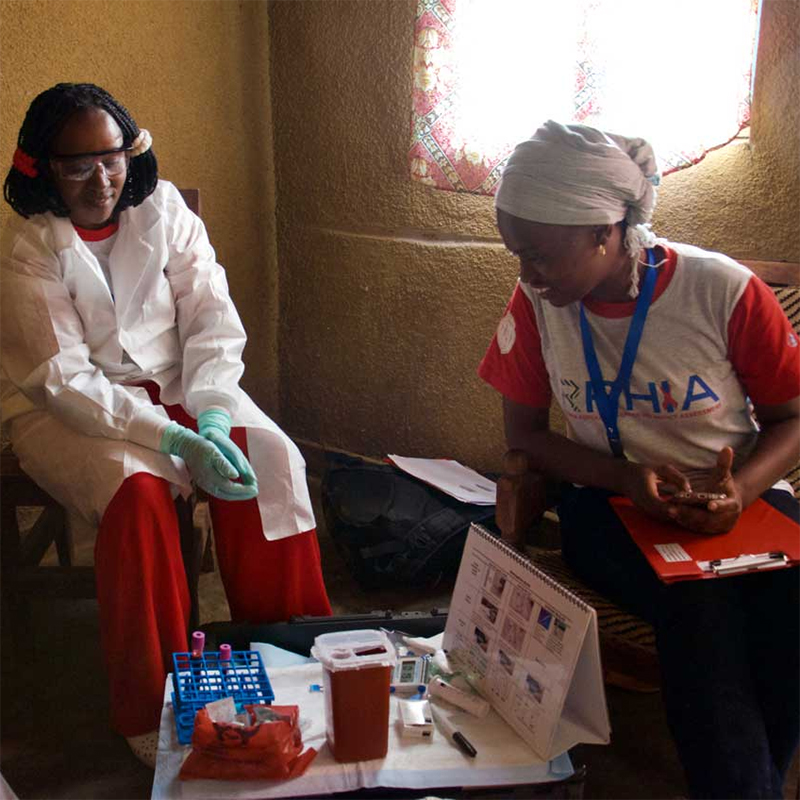
Community workers in a local citizen’s home after collecting blood samples
Rwanda on Track to Achieve HIV Epidemic Control
“Results from the Rwanda Population-based HIV Impact Assessment (RPHIA) show that 76 percent of all HIV-positive adults, including almost 80 percent of HIV-positive women, have achieved viral load suppression, a widely used measure of effective HIV treatment in a population. This surpasses the Joint United Nations Programme on HIV/AIDS (UNAIDS) target of 73 percent by 2020. Rwanda has made tremendous progress by reaching or exceeding the UNAIDS 90–90–90 targets external icon, particularly among women, and nationally by attaining 84–98–90 among adults.”
Read the press release on Rwanda’s progress
More information on Rwanda’s Population-based HIV Impact Assessment (PHIA)
- Browse global HIV publications here
- Download global HIV fact sheet
- Read CDC’s latest global HIV news releases
- Browse Global HIV images on the CGH Flickr stream or search by topic or country
- Search images by topic on the Public Health Image Library (PHIL)
- Learn more about global HIV
Contact media relations to speak with a Global HIV expert
media@cdc.gov
(404) 639-3286
(9:00 am – 6:00 pm)
(770) 488-7100
(After Hours)


